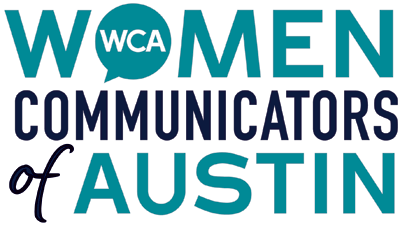Written by Victoria Williams.
 How do you gain internal and upward influence with executive in the workplace? Stacy Armijo knows.
How do you gain internal and upward influence with executive in the workplace? Stacy Armijo knows.
Armijo – who serves as Senior Vice President and Austin General Manager for Pierpont Communications – is a focused, strategic communicator with expertise in communication planning, media relations, crisis communications, public affairs, marketing communications and social media. An influential leader both in her career and in the community, Stacy will share best practices on how to get a seat at the executive’s table at WCA’s August luncheon on Wednesday, Aug. 19.
Here are some tips from Armijo to help you elevate your influence in the workplace:
Q: If someone, who oversees a department for a company, is having trouble being recognized by their peers and colleagues, what are some things they could do to be viewed as a valuable asset?
A: I’d encourage you to reflect on what you’re seeking recognition for. If you don’t feel you’re being recognized, ask yourself if what you’re contributing is really understood and valued at the organization. While you may know that dramatically improved email response rates are valuable, your colleagues may not understand how they contribute to the bigger picture and are unlikely to recognize you for it. So, does your perception of value and your colleagues’ align? If not, that’s a great conversation starter to address those discrepancies. Also, remember that “recognition” is often disguised as more work, so even if you’re not getting lots of verbal accolades or company awards, if you find more people turn to you more often for support or opinions, they value your contributions.
Q: How might someone influence others outside their organization to gain upward mobility and be looked upon as a leader, if most of their workload requires them to serve in an internal capacity?
A: First and foremost, do a great job at your day job. If your work is focused internally, make sure it is the best it can be because when you win, the professionals above you win and they’re going to take you with them when they elevate through the organization. In addition, find ways to shine outside your company through things like leadership roles in professional or charitable organizations. Not only will that make you look like a star in your company, it will give you chances to experiment with new skills and projects to expand your value and surface new opportunities for your career.
Q: What are some of the common mistakes executives make when trying to transition to a higher position of authority?
A: They chase titles, instead of value. Here’s what I mean… The executive who is most concerned about their own title and the “headcount” they get to control is not the most respected executive in an organization. Don’t get caught up in those trappings. Rather, focus on the value you could deliver to the organization and inspiring those around you to share your vision, so they can achieve it with you (not under or behind you). When you do that, you won’t have to chase opportunities because bigger, better opportunities will chase you.
Q: What are some things executives can do to ensure they stay at the top of their game once they’ve made it to a position of authority?
A: Serve as an example to your team by continuing to seek new skills and learn more about your industry and the community your organization serves. Never think of yourself as “just” a communications professional. Cultivate a broad understanding and use that to expand the ideas and insights you’re able to provide. For example, some of the most valuable contributions I’ve made for my clients and for Pierpont have had nothing to do with communications. In short, always seek the next challenge to keep learning and growing.
Q: What advice can you offer to younger communicators who might be looking to carve out a successful career for themselves as a PR executive?
A: There has never been a better time to be in this industry. Our landscape is changing incredibly fast and those who aren’t afraid to jump in and help navigate it will capture the opportunities. And while you do, focus on the fundamentals: cultivate active listening skills, continually improve your writing and read everything you can. Successful PR practitioners have always understood their power lies in crafting a meaningful message and now that philosophy is shared across a lot more mediums, so take advantage and lead that conversation in your organizations.
Q: You are very involved in the community. How do you decide which organizations to devote your free time to without compromising your workload?
A: Early in my career, I adopted a very simple philosophy: say yes. That sounds obvious, but you hear a lot of advice about being intentional and selective, setting clear parameters and boundaries for involvement. That’s a valid approach at certain points in your career, when opportunities abound and you’re pulled in many directions. However, earlier in your career, you don’t know what you don’t know. For example, if I’d sat down and thought about the causes I’m passionate about, the American Red Cross would not have been among them, simply because I didn’t know enough about the need they serve or the impact I could have. Fortunately, someone I respected asked me to get involved and I said yes. That has turned out to be one of the most rewarding and valuable things I’ve done. Likewise, someone once asked me to get involved in the American Marketing Association and it turned out to be valuable for leadership development in a way I couldn’t have imagined. So, surround yourself with people who make you better – personally and professionally – and when they see opportunities for you to become involved (like in WCA!), say yes. You’ll find a way to make it work.
For more information on this month’s upcoming luncheon or to register, click here.
- Announcing Our 2016-2017 Board of Directors - May 31, 2016
- Freelance Corner: Making Impressions, Copyright FAQs and Nixing Procrastination - May 25, 2016
- Austin’s Best Kept Secrets: Swimming Holes - May 24, 2016

